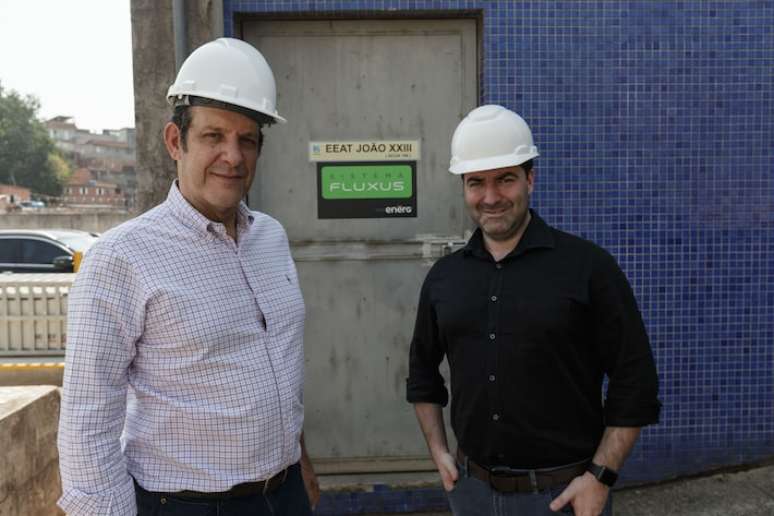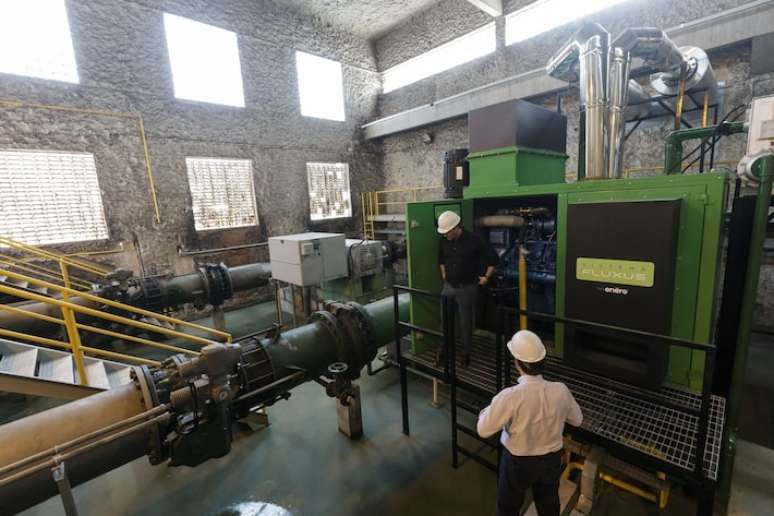The technology has been highlighted in awards that seek innovative solutions in the field of energy efficiency. The main advantages concern the regularity, stability and security of supply
The recent blackouts highlight how dependence on electricity affects the lives of the population and businesses. The situation is becoming even more critical in essential services, such as water supply. This concern goes beyond moments of crisis: the objectives of the new health framework require universalization water and sewerage services until 2033. In this context, the diversification of energy sources in pumping stations, for example by using natural gas, contributes to the continuous operation and availability of water.
Historically associated with the generation of heat and electricity, natural gas has been increasingly used as a source of motive energy to drive pumps and compressors. The main advantages are related to the regularity, stability and security of supply, as well as lower pollution compared to diesel engines.
To distribute water, sanitation companies use lifting stations with a pumping system. For this system to work, it is necessary electric energy. With the new technology, the pumps are no longer electrically operated but are driven by a motor. natural gas. This is a disruptive technology, already present in other countries, and which is starting to gain strength in Brazil.
Combustion engines powered by natural gas reduce the impact of power outages, which are vulnerable to winds, storms, and accidents. Transported through underground pipelines, gas provides a more consistent and reliable supply than electricity. “It’s very rare for a pipeline to go down,” says mechanical engineer Silvio Shizuo, professor of mechanical engineering at FEI.
Energy efficiency also enters the equation. In the conventional electric pump drive system, energy losses can range between 15% and 30% due to the long drive chain and intermediate components, such as cables, cabins and transformers. Gas-powered pump systems connect the fuel directly to the engine. This means greater efficiency.
Developed by Fluxus Soluções em Energia, distributed by Energ Geradores and known commercially as “Fluxus System”, the technology has been highlighted in awards seeking innovative solutions in energy efficiency.
One of them was the winner of the Open Spot 2021 Sanitation Innovation Challenge, promoted by the Brazilian Association of Sanitary and Environmental Engineering (ABES). The system was a finalist in the Lab Procel public call for the “Water Supply” challenge, promoted by Eletrobras, in 2020. “It is a diversification of energy matrices. Before there was only one way, the electric one, that is, the contingency one, the generator. Now there is another way,” explains Caio Mutz, executive director of Fluxus Soluções em Energia.
The technology is already used by Sabesp
The technology for using natural gas as an energy alternative in pumping systems is already operational at the Basic Sanitation Company of the State of São Paulo (Sabesp).
There are currently ten stations with the system already installed or in the final stages of implementation. “Innovation in the healthcare sector has great potential to improve efficiency and optimize the management of natural resources. The use of natural gas, for example, guarantees operational improvements and environmental sustainability,” says the company.
One of the places where the system is installed is the João XXIII pumping station, located in the southern zone and responsible for pumping water from the Guarapiranga system to the municipalities of Taboão da Serra, Cotia, Embu das Artes and Itapecerica da Serra, in Greater São Paolo.

According to Sabesp, it is directly responsible for the supply of approximately 845 thousand inhabitants and, with the use of gas engines, makes the supply more flexible for another 190 thousand inhabitants. The average energy consumption of the installation is 1,550,000 kWh/month.
Of the six 800 hp pumps (1 hp equals 735.5 watts), two have been running on gas since the end of last year. Until the use of petrol pumps, the station was subject to frequent power outages, which led to a lack of water. The expansion of capacity was hampered by bottlenecks in the electricity supply infrastructure.
“It is a hybrid pumping station, that is, with electric pumps and gas pumps. If the electric one is missing, it will work with gas. Or it can work with both pumps together”, explains Bruno Teixeira Moreira, director of Energ.
According to the company, the use of two dies “represents a new concept in the supply system that allows for much greater reliability.”
Marcos Rosa, a professor in the Department of Electrical Engineering at Mackenzie Presbyterian University, points out that gas use may be even more relevant in atypical weather conditions, such as droughts. Reducing the amount of water available requires the use of more distant or deeper water sources, increasing costs.
“Some market participants are concerned about the lack of rain. Gas could act in this scenario, ‘saving’ the water system.”
Basic health framework
The importance of diversifying energy sources in the health sector goes beyond moments of crisis, such as blackouts and bad weather. The issue is also linked to the objectives of the new legal framework for sanitation. In force for three years, the law establishes targets of 99% access to drinking water and 90% access to wastewater treatment and collection by 2033.
On average, the state of São Paulo has numbers close to the target: 95.2% access to water, 90.5% wastewater collection and 88.2% treatment. But some municipalities maintain rates below 40%, such as Guarulhos, Cotia, Itaquaquecetuba, Carapicuíba, Osasco and Barueri.
A study by Instituto Trata Brasil shows that in 2022, more than 8 million Brazilian homes were not connected to the general treated water supply network. There are almost 35 million Brazilians without access to treated water and 95 million do not have wastewater collection and treatment.
The pursuit of universal basic sanitation is a citizenship issue, with direct impacts on public health and the economy.
Physicist Ely Dirani, professor at the Department of Electrical Engineering at PUC/SP, believes that new pumping stations can help achieve the goals of the new health framework.
“Another series of pumping stations will need to be built, and the ability to use gas pumps would speed up construction and reduce costs,” the expert says. “This technology does not require all the intermediate electrical components, such as substations, transformers, panels, inverters, electric motors and wiring.”
Impacts on the environment
Considered a “transition fuel,” an intermediate stage between oil and renewable energy, natural gas is a fossil fuel, which means it contributes to the emission of polluting gases into the atmosphere. This is the only disadvantage of using gas over electricity, according to Adrianno Lorenzon, director of Abrace Natural Gas, an entity that brings together more than 50 business groups responsible for almost 40% of industrial electricity consumption in Brazil and 42% of industrial natural gas consumption.
Shizuo agrees, but the professor makes a point about using diesel or coal. “Gas is not a green fuel. But considering that it is pumped using combustion engines, it pollutes much less than diesel.”
At first glance, Dirani says it may seem “counterintuitive” to use combustion engines instead of electric motors to pump water when thinking about sustainability and pollution. “However, when you look at the complete solution, the main issue that is reported is security of supply,” he says.
To neutralize the emissions of polluting gases, Mutz explains, the gas source of the pumps can be different, including biomethane, which can use waste as a raw material, or biogas (obtained from the decomposition of organic materials). Both are 100% renewable.
Source: Terra
Rose James is a Gossipify movie and series reviewer known for her in-depth analysis and unique perspective on the latest releases. With a background in film studies, she provides engaging and informative reviews, and keeps readers up to date with industry trends and emerging talents.






